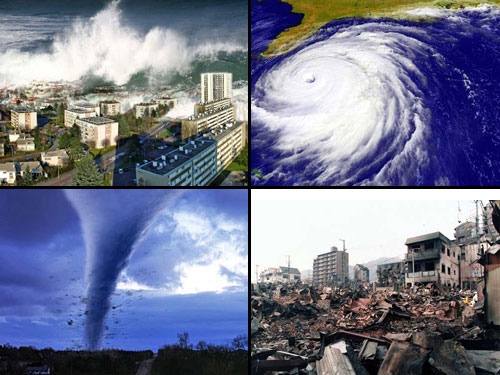Since before the days of Moses and the Exodus it has been part of the human imagination to have control over the most powerful of natural forces, like the parting of the Red Sea, delivering people from suffering and bringing them to the “promise land.”
Today scientists and engineers are under increasing pressure to devise ways of protecting humans and property from increasingly destructive natural phenomena like “hybrid hurricanes”, tornadoes and ocean surges; but until now their efforts have been as fruitless as Don Quixote de la Mancha and Sancho Panza attacking windmills.
In March, 2013, we sat down with Kerry Emanuel, an MIT climatologist who said it was difficult to predict hurricanes; since then he has published two papers, one attributing global warming to the trend of increasingly stronger Atlantic Ocean hurricanes and the other, the cycling of hurricane activity from high to low is caused by the rise and fall of anthropogenic pollution.
New Tools Meeting New Challenges
Today scientists and engineers have new tools, such as Planet IQ, an atmospheric satellite data collection network, that may one day bear fruit in helping human society cope with earth’s unpredictable atmosphere.
Professor Mark Z. Jacobson, of the Civil and Environmental Engineering Department at Stanford has been using complex computer simulations to study a range of natural phenomena from trade winds, pollution and atmospheric chemicals to weather patterns and climate.
Having performed thousands of simulations, Jacobson toyed with the idea of placing a huge array of wind turbines in the path of an oncoming hurricane. Much to his surprise he found that wind turbines placed just offshore in the most vulnerable areas, for example, in the Gulf of Mexico, off the coast of New Orleans, would extract enough energy from a hurricane to significantly reduce its destructive power as it comes ashore. Apparently, hurricanes slow up as the come close to shore, reducing winds enough that wind turbines could stay up and operational as the hurricane passes.
Taming Hurricanes With 70,000 Wind Turbines
According to a simulation of Katrina encountering a field of 70,000 wind turbines, 300 Gigawatts of power was produced, the field reduced wind speeds by 50% and increased the central pressure by 16mb. Finally, storm surges were decreased from 6% to 72%.
The world’s largest offshore windfarm, the London Array has just 175 turbines and was built at a cost of $2.88 billion. To build a wind farm with 70,000 turbines would cost close to $1 trillion using current technology and pricing.
The report, published in Nature Climate Change, was published on Feb. 26, 2014.
Related articles on IndustryTap:
- NASA Competition Produces Innovative Hurricane Tracking “Uncrewed Aerial System” (UAS) Ideas
- Certified Igus Cables Withstand Hurricanes and Cyclones to Meet the World’s Rising Demand for Oil
- What’s Next for Drones? Hurricane Forecasting to Save Lives.
- Hurricane Devastation Increasing as Waters Warm
- Supercomputer Simulations Linchpin Of Third Industrial Revolution
- Making The Heavens Open Up With Cloud Seeding Drones
- One Of World’s Biggest Heavy Lift Vessel Moves 9,750 Ton Topside Onto Oil Platform (Video)
- Tiny Houses, BIG Movement: Sometimes More Isn’t Better, It’s a Burden.
- Floods, Fraudulent Titles and Frightening Automobile Failures
References and related links:




